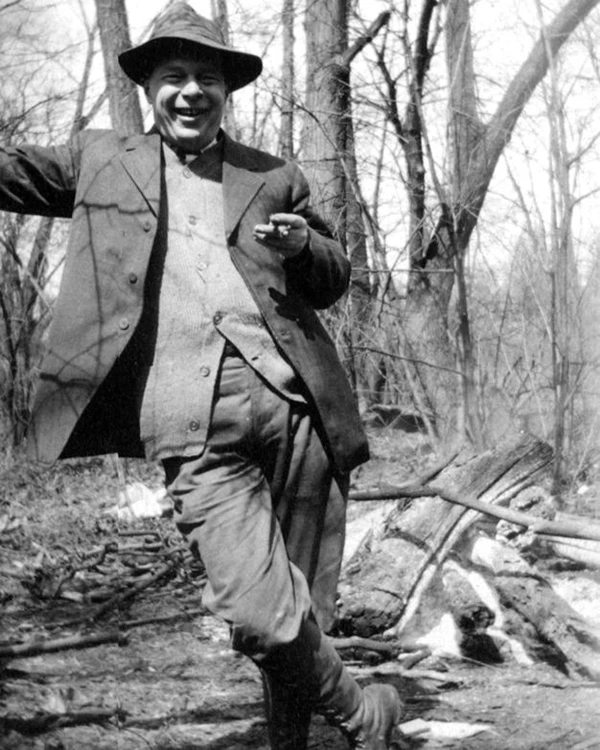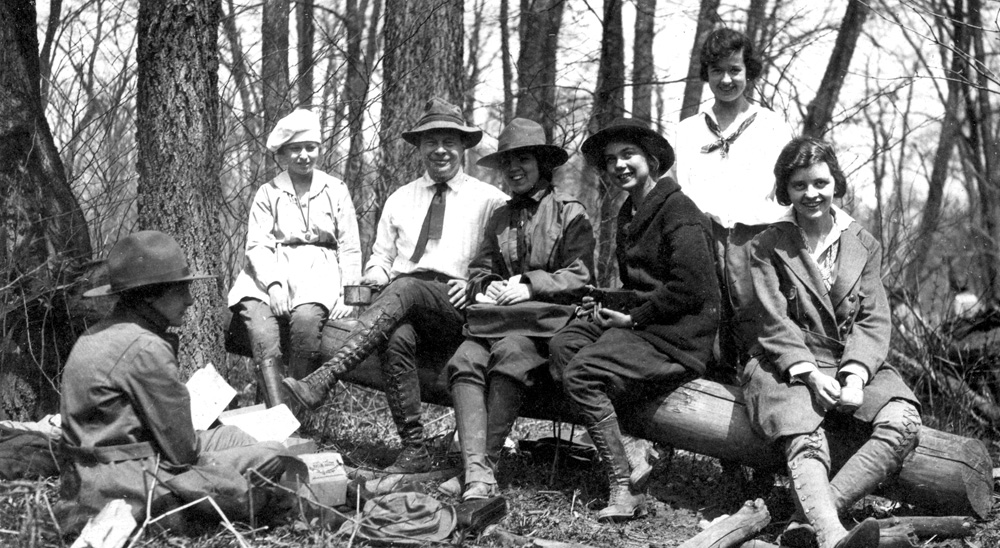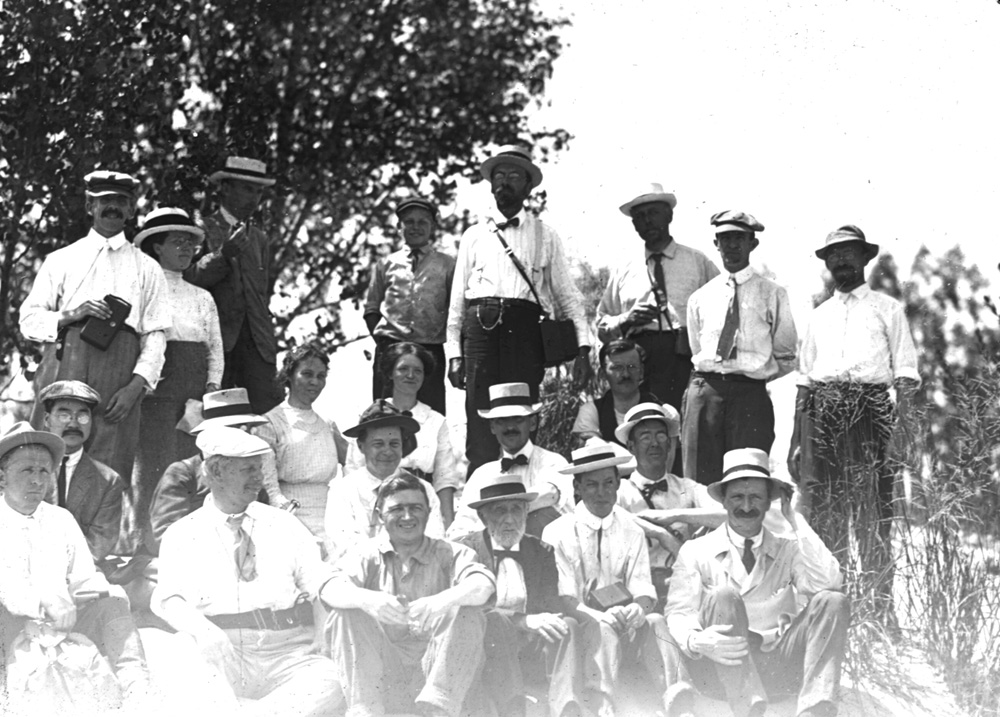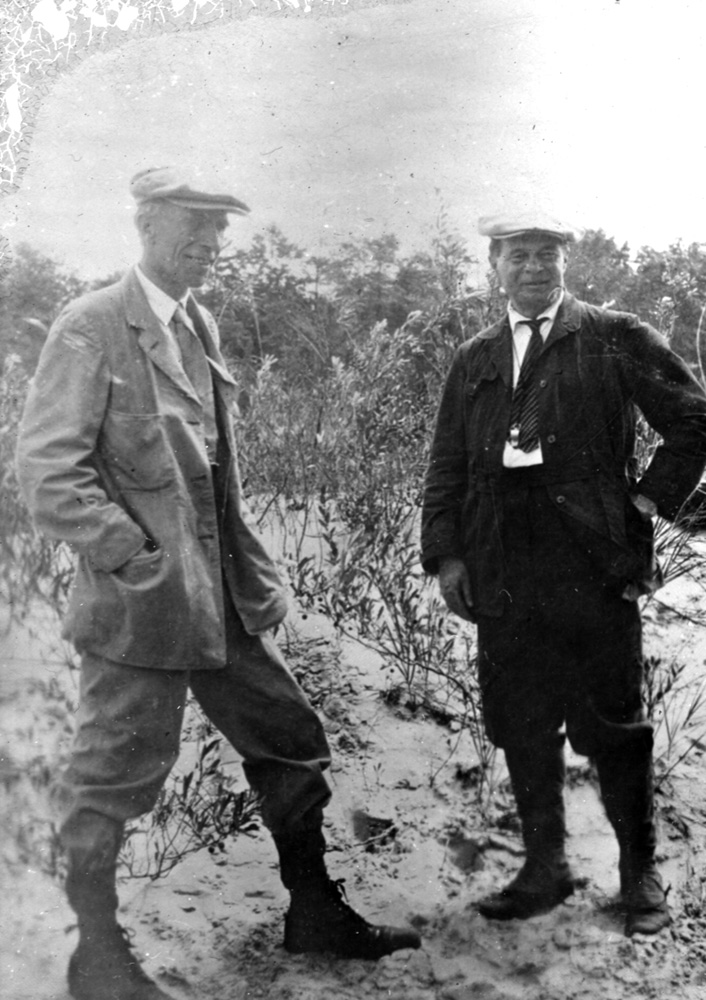Last updated: September 8, 2023
Person
Henry Chandler Cowles

University of Chicago Department of Botany Records; University of Chicago Library
“Many of these species are found nowhere for many miles outside of the dune region, so that failure to conserve the dunes would result in the extinction of this wonderful flora for all time.”
Henry Chandler Cowles (pronounced “coals”) was fascinated with the relationship between plants and their environment. His seminal research in plant ecology made him world renowned, and his passion for conserving natural spaces led to the protection of a number of Illinois state parks, the Cook County Forest Preserves, and the Indiana Dunes.
Born on the family farm February 27, 1869, Henry was the ninth generation of Cowles to live in Connecticut. His mother Eliza nurtured his interest in nature by taking him on walks and teaching him the names of flowers and trees.
Henry moved to Ohio and attended Oberlin College, where he studied under Professor Wright, a skilled instructor both in the classroom and the field. Wright encouraged Cowles’ interests in Earth processes and plant classification and paid him fifteen cents an hour to mount specimens for the college’s herbarium. Henry’s fascination in geosciences erupted his senior year, and after graduating with honors in 1893, he wrote he had “pretty much made up [his] mind to specialize in Geology instead of Botany.”
Cowles came to Chicago as a graduate student in 1895. He received a fellowship to study geology at the University of Chicago, and was encouraged by his professors to pursue his interests. The head of the newly formed botany department, Professor John Merle Coulter, reinvigorated Cowles’ interest in plants and the budding science of ecology. Coutler lectured on Eugene Warming’s Plantesamfund, one of the first ecology books. Charles J. Chamberlain, also Coulter’s student, (and later a botany professor at the University of Chicago) recalled in a memoir:
…none of us could read Danish except a Danish student, who would translate a couple of chapters, and the next day Coulter would give a wonderful lecture on Ecology … Cowles, with his superior knowledge of taxonomy and geology, understood more than the rest of us, and became so interested that he studied Danish and, long before any translation appeared, could read the book in the original …
Warming’s book investigated changing plant communities on coastal dunes of Denmark. Considering the relationships between geology and botany, Henry became eager to test Warming’s ideas on Lake Michigan’s dunes, where he first visited in 1896.
From his keen observations here, he authored his landmark paper “The Ecological Relations of the Vegetation on the Sand Dunes of Lake Michigan,” the first doctoral dissertation on ecology. His work ignited international interest in the subject and the Indiana Dunes, and earned him a position on the university’s staff as one of the first ecology professors in the world.
Image caption: Professor Cowles and his students enjoy a lunch break on one of their field excursions. One of his students, Victor Shelford, would go on to create the Nature Conservancy; another, May Thielgaard Watts, initiated the first Rails-to-Trails project, the Illinois Prairie Path. (University of Chicago Department of Botany Records, University of Chicago Library)
Ecology is the study of how living and nonliving parts of an ecosystem interact. This field of science was in its infancy when Henry Cowles first explored the Indiana Dunes in the late 1800s. Lake Michigan left an over 13,000-year history of ecosystem development for him to unravel. Cowles used his geology background and plant knowledge to help construct how different plant communities develop over time.
“Ecology, therefore, is a study in dynamics.”
Cowles was inspired by early researchers in the subject. He refined their ideas which helped define this new field. His research around this region introduced the world to two important ideas in ecology, plant succession and climax formation.Plant succession describes how plant communities replace each other over time. According to Cowles,
“Each species affects the soil in a way disadvantageous to itself and thus paves the way for different species to replace it.”
This explains how open fields become young forests, or how a bay of Lake Michigan became Cowles Bog.Climax formation is what Cowles called a more-stabilized plant community at the end or final stage of plant succession. He recognized that because of disturbances and a constantly changing climate, equilibrium is never reached in plant succession.
“As a matter of fact we have a variable approaching a variable rather than a constant.”

Image caption: In 1913, Cowles coordinated an International Phytogeographic Excursion, where he led prominent botanists from Europe across the United States. He wrote that they agreed on four places “highly worth seeing, even in the briefest trip to the United States. They were the Grand Canyon, Yosemite, Yellowstone Park, and the fourth was the Lake Michigan dunes.” (University of Chicago Department of Botany Records, University of Chicago Library)
In 1911, Cowles helped form the Prairie Club of Chicago with Thomas W. Allinson and Jens Jensen. The club represented the first concerted push to protect the Indiana Dunes for the benefit of its natural communities and for future generations. Their efforts, with the help of Bess Sheehan and Richard Lieber, would result in an Indiana Dunes State Park in 1925. Over four more decades would pass before the rest of the remaining dune habitats were saved with the establishment of Indiana Dunes National Lakeshore in 1966, following a contencious 14-year long battle over land use of the Lake Michigan shoreline. This second push would not have been possible without the help of Dorothy Buell and her Save the Dunes Council; as well as Senator Paul H. Douglas, the "third senator from Illinois."
For over 30 years, Cowles was an authority in the field; he led scientific organizations, pursued conservation work, and continued mentoring students on excursions at the Indiana Dunes and across the country. Both his direct and indirect influence has preserved thousands of acres of land and inspired generations of researchers and conservationists. Cowles’ legacy continues today as new students come here to follow his footsteps and make their own observations about this captivating place.

Image caption: Henry Cowles stands on a dune with English early ecologist Arthur Tansley. Tansley wrote of his friend: “During the first decade of this century indeed Cowles did far more than any one else to create and to increase our knowledge of succession and to deduce its general laws. By acute and thorough observation and by lucid exposition he became the great pioneer in the subject.” (University of Chicago Department of Botany Records, University of Chicago Library)
Learn More
- Watch National Parks in the History of Science: Plant Succession (Video) (U.S. National Park Service)
- Explore more conservation history of Indiana Dunes National Park here: A Signature of Time and Eternity
Sources
- Cassidy, Victor; Henry Chandler Cowles: Pioneer Ecologist; Kedzie Sigel Press, 2007.
- Cook, Sarah Gibbard; Henry Chandler Cowles and Cowles Bog, Indiana; Field Museum of Chicago, Indiana Dunes National Lakeshore, 1999.
